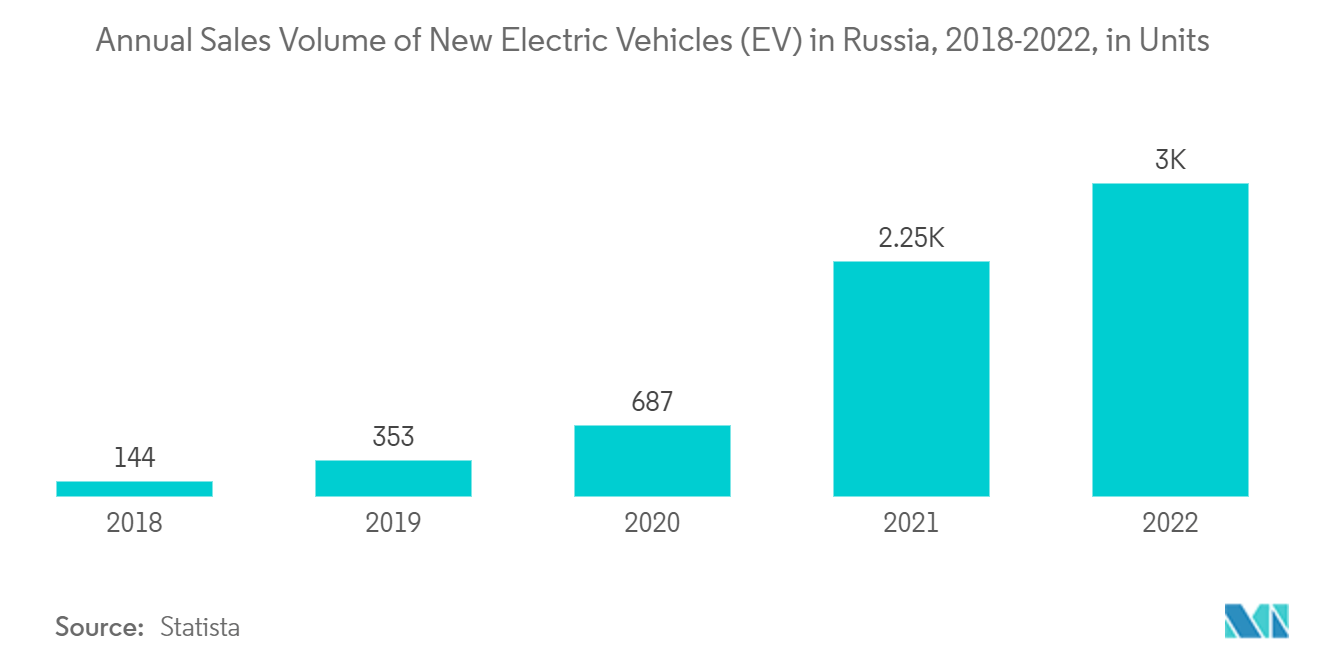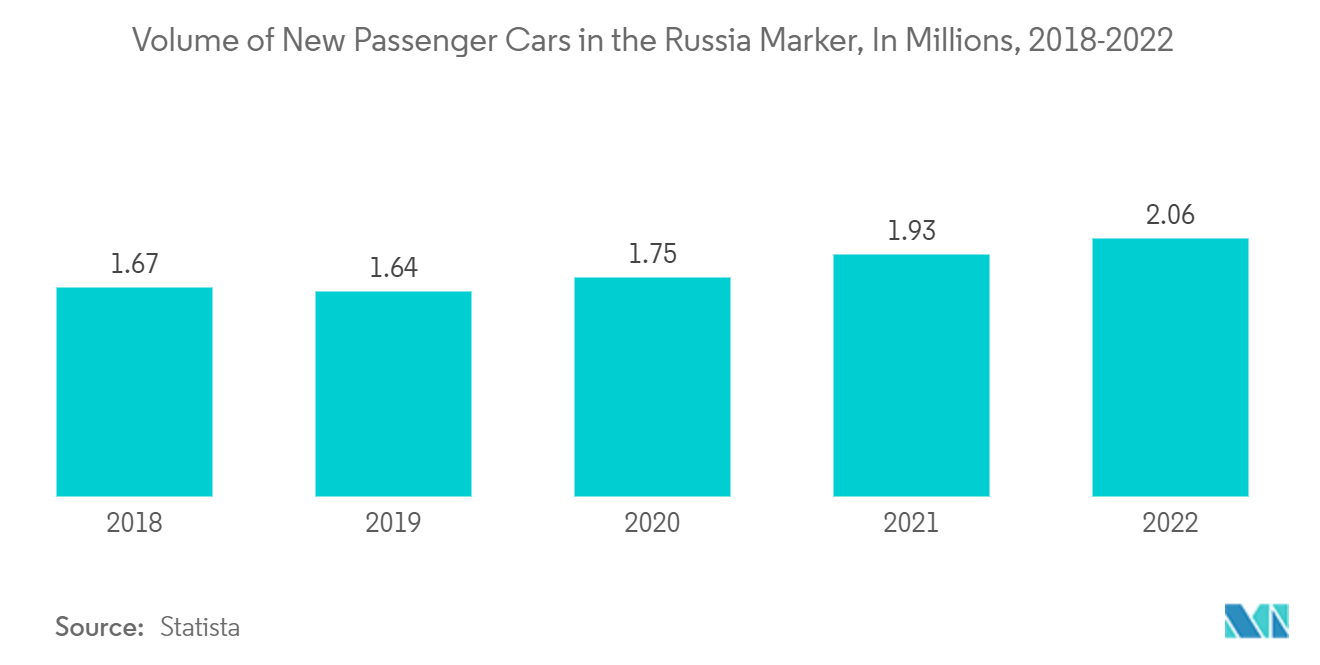Market Trends of Russia Auto Loan Industry
Increasing Sales Volume of Electric Vehicle in Russia
The growing popularity of electric vehicles may lead to shifts in loan demand. Consumers interested in purchasing EVs may seek specific financing options tailored to these types of vehicles, potentially influencing the overall composition of the auto loan market. Lenders and financial institutions may respond to the rise in electric vehicle sales by introducing specialized financing programs for EV buyers. This could include competitive interest rates, extended loan terms, or other incentives to encourage EV adoption. Interest rates and loan terms for electric vehicles may be influenced by factors such as the perceived risk, the resale value of EVs, and government incentives. Lenders assess these variables when determining financing conditions for electric cars.

Increasing Volume of New Passenger Cars in Russia
The rise in the volume of new passenger car registrations is likely to contribute to increased demand for auto loans. Consumers purchasing new cars may seek financing options to facilitate their vehicle purchases. The higher demand for auto loans due to increased new car purchases may lead to competitive interest rates. Lenders may offer attractive terms to attract borrowers in a competitive market. Auto loan providers may strengthen partnerships with dealerships to streamline the financing process for consumers. Collaborations between lenders and dealerships can offer convenient financing options at the point of purchase. The increasing volume of new passenger cars may align with broader consumer credit trends. Economic conditions, employment rates, and changes in consumer behavior can influence the willingness of individuals to take on auto loans. Factors such as the stability of the automotive market, vehicle depreciation rates, and economic conditions can influence lending criteria and interest rates.


